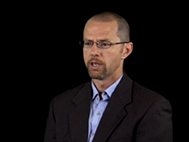Stories about people willing to die for their beliefs have mesmerized readers since Plato’s report that Socrates chose to drink hemlock rather than recant his beliefs or flee Athens. Why would someone forfeit their own life? Greek and Roman stories about self-sacrificing death tended to follow a distinct pattern: in times of great crisis, a high-ranking person might offer his or her own life in a desperate attempt to persuade the gods to grant some reward such as protection of the homeland or military victory. Similar stories appear in early Jewish texts like 2 Maccabees, where they serve to strengthen communities during times of crisis.
What role does martyrdom play in the story of 2 Maccabees?
Second Maccabees, probably composed in the first century BCE, is among the first Jewish texts to describe self-sacrificing deaths. In this text, the foreign ruler Antiochus forces the community to choose between death and profaning a religious commitment. While most of the community capitulates, seven brothers and their mother choose death. That someone would be willing to be a martyr is simply baffling to the aggressor, and the brothers’ choice makes clear the high cost of holding on to belief before the threat of violence and death. At the same time, the brothers are promised resurrection where they will be reunited with their mother and their deity. The costs may be high, but so are the rewards.
The author of 2 Maccabees presupposes that the Jewish people had sinned by following the commands of the foreign ruler. These sins were too great to be atoned for by the traditional means of prayer, fasting, and animal sacrifice. The willingness of seven brothers and their mother to be killed rather than violate their religious rules takes the sacrifice to a higher level: humans replace animals as a means to atonement. The text reveals that human self-sacrifice revitalizes the human–divine relationship disrupted by sin: the Jews’ relationship to their deity, which was weakened by those who accepted a foreign king, is restored.
What is the purpose of martyrdom stories like 2 Maccabees?
Second Maccabees portrays many deaths as holy, both in the battles described between Jews and their opponents (2 Macc 5:12–14) and in the cultic setting of the altars where martyrdom takes place (2 Macc 7). Such martyrdom stories are always violent, even though the violence is enacted in the name of an ideal mode of religious behavior. The religious zealotry of martyrdom permits an individual to demonstrate an intense purity of heart through personal suffering and death. The power of martyrdom can mobilize sentiment in favor of the dead martyrs, one Jewish faction over another, or a particular government. In the case of 2 Maccabees, the Maccabean martyrs endorse Hasmonean rule by holding their vision of a law above Antiochus’s law. This stance is later reinforced by those who fight and defeat Antiochus.
Later, Jews and Christians alike would develop further martyrdom traditions that elaborated on stories about the Maccabean martyrs. Scholars debate the historicity of these texts. After all, martyrdom stories are often concerned more with the formation of a community rather than historical accuracy. Their ability to inspire courage or at least a sense of social cohesion in trying times shows, however, the power of the human imagination.





